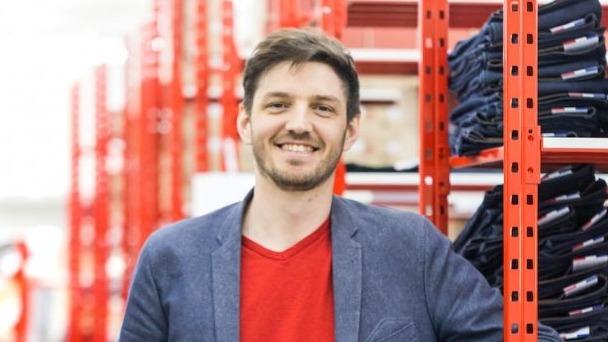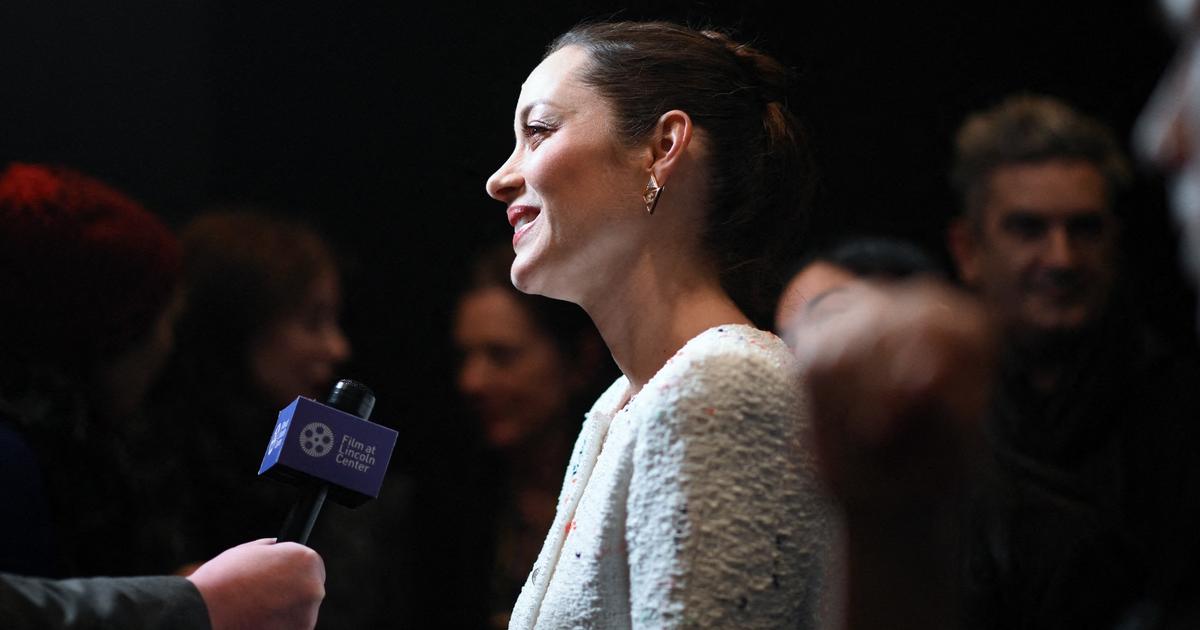The fine red stitching that runs diagonally from the right back pocket of the 1083 jeans is nothing out of the ordinary.
It symbolizes the transverse line of 1083 kilometers which separate Porspoder (Finistère) to Menton (Côte d'Azur), the two furthest towns in France.
This detail guarantees the French customer that the jeans they are wearing were made within this maximum distance from their home.
A garment that unites
When Thomas Huriez had the idea of relaunching Made In France jeans, this wardrobe classic had massively deserted the hexagonal spinning mills.
That was in 2013. The craze for local products was only just beginning.
As for Thomas Huriez, he was bored.
“I had worked in the IT sector for years, and I never saw the fruit of my action,”
he recalls,
“besides, I liked clothes and I wanted to do a job. consistent with my values.
Abandoning the screens, the entrepreneur first ran an organic clothing store, at the time with a very hippie connotation.
"It was too marked"
he explains,
"I therefore sought to market a garment that brings everyone together".
The jeans seemed obvious to him.
“From the United States with the Levi's to Italy, with the 'blue of Genes', or France with the 'Denim' (of Nîmes), it is a garment that everyone claims to be the first to have.
This makes it a universal product”.
As French jeans no longer really existed, Thomas Huriez decided to create his own range.
He had difficulty finding a small sewing workshop in Marseille, whose managers had carefully preserved the tools for making jeans.
“Relying on social networks, we launched a presale of 100 pieces.
The machine got carried away.
We immediately had more than 1000 requests.
»
What followed was a succession of
“good growth galleys”,
as Thomas Huriez defines it.
Local and nomadic
The entrepreneur had to find other workshops, relaunch a know-how, hire designers, but also salespeople and developers.
Because the revival of jeans in France is a clever mix of relocated production and digital nomadism.
The company's headquarters are located in Romans-sur-Isère, in Drôme.
It also has its own workshops in Rupt-sur-Moselle, in the Vosges.
The manager, the sales representatives and the creatives are nevertheless out and about, meeting partners, distributors or on their way to the 1084 boutiques scattered throughout France.
Their offices are then summarized in a nomadic screen wandered under the arm.
“We are all used to this way of working.
We did not need to adapt during confinement.
Everyone already had their tools with them,”
recalls Thomas Huriez.
Digital is also at the heart of the distribution model.
Half of 1083's products are sold on the Web, and the other half in its five own shops or with partners.
The majority of troops are made up of Thin Needles
.
“We have contributed to the creation of a hundred indirect jobs,”
adds the entrepreneur.
Thomas Huriez firmly believes in the relocation of French textiles.
For this, he admits that the business model must be different from that of his competitors.
He decrypts:
“All current jeans are made in Bangladesh, Pakistan, Turkey, where labor is cheap.
Whether branded or mass market, their manufacturing cost is roughly similar.
But a branded model is sold for 10 times its creation price.
So I made the choice to make branded jeans, of good quality, in France, certainly more expensive to produce, but sold only two or three times their creation price, by eliminating all the intermediaries that we find in fast fashion.
We stick to the right price.
With us, there are no sales
".
Thomas Huriez is still stunned by the success of 1083. Unknown to the jeans battalion ten years ago, today he is at the head of a veritable small industry.
As France does not produce cotton, it is supplied with recycled material.
“From spinning to sewing, including finishing and cutting, we master six trades out of the eight that are needed to manufacture our jeans
,” he explains.
Le 1083 also exists in linen, another textile sector partly rebuilt by Pierre Schmitt, another passionate entrepreneur who devoted himself body and soul to relocation.
Come on children!
From north to south, Made in France is regaining ground.
Learn more about Adobe Acrobat




/cloudfront-eu-central-1.images.arcpublishing.com/prisa/SYNEMXWJOBDHVIJMLL3S53WIAM.jpg)




